Swap Services
To really understand the power of the service-oriented framework, we will replace some services in the basic autonomous driving pipeline with more sophisticated ones to add distance sensing to our Rover.

Elias Groot
Founding Member, Ex-Software Lead and Ex-Project Administrator
Prerequisites
- You are connected to the ASE network
- You have
roverctland Docker installed - The Rover is powered on and put on NXP cup tracks
- The Rover is calibrated
- The Basic Autonomous Driving pipeline is installed on the Rover
Set Up Your Pipeline
Navigate to the manage view in roverctl-web and enable the basic autonomous driving pipeline again.
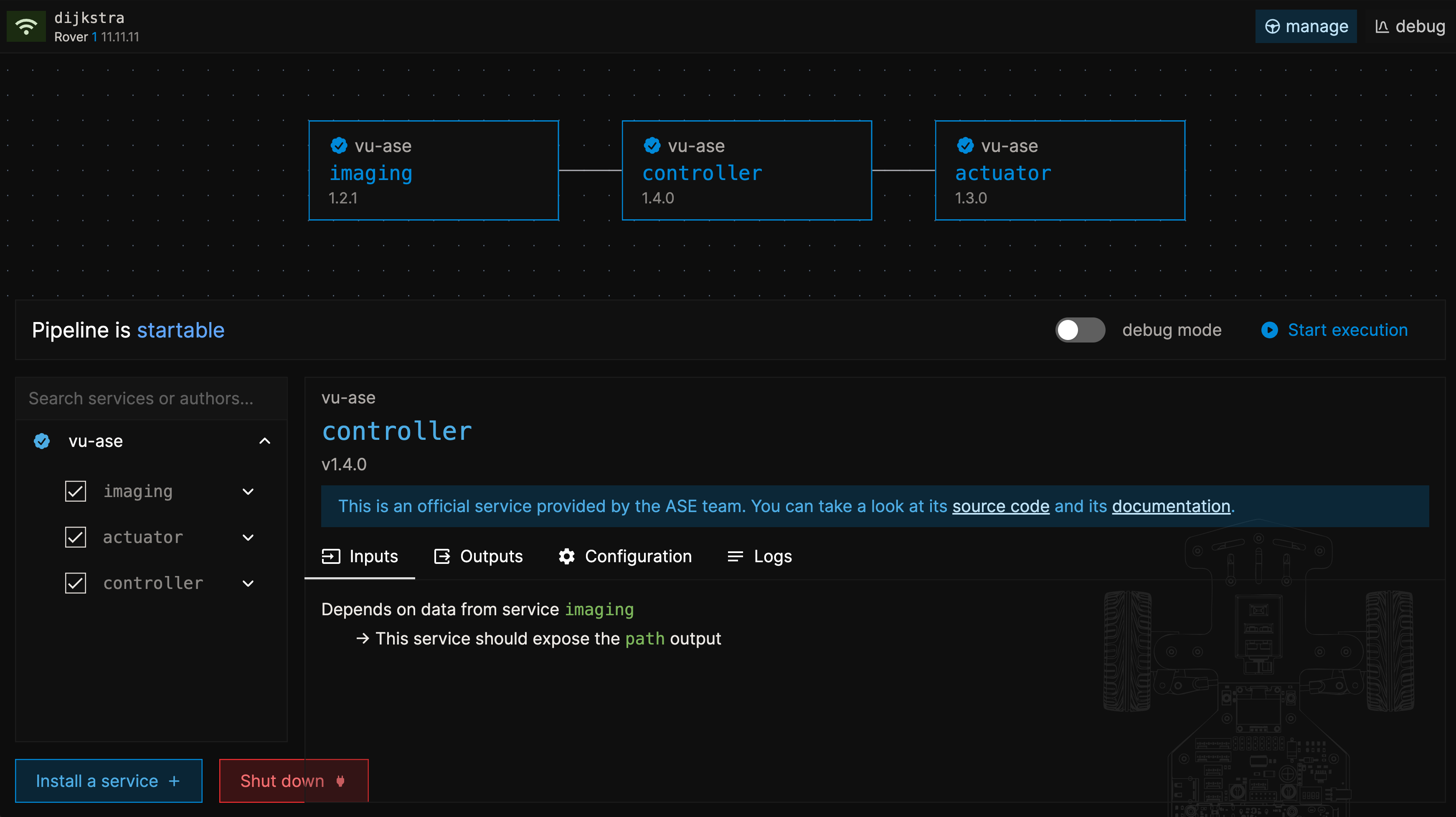
Certainly, this is a fun little pipeline, but what else can we do? Let's try to replace the "controller" service with a more sophisticated one: the "safe-controller".
This controller is "safe" in the sense that it will avoid crashing the Rover into a wall by braking based on its distance sensor. The service has been developed by ASE and is available here. But how do we install this source code on the Rover?
Install a Service
All services are meant to be self-contained. All their code should live in one folder and can be conveniently transferred among Rovers. We will download the service directory for the safe-controller service. To do so, head back to your terminal and clone the safe-controller repository.
# Clone the safe-controller repository
git clone git clone https://github.com/VU-ASE/safe-controller.git
# Enter the directory
cd safe-controller
Now, we will upload this directory to the Rover using the roverctl upload command. You need to specify the current working directory (.).
# Upload the safe-controller service to Rover 12
roverctl upload . -r 12
When you run this command for the first time, it will fail, because roverctl does not know your author name yet. Specify this using the roverctl author command.
# Set the author to "elias"
# All code you upload will be tagged with this name
roverctl author --set elias
Now try uploading your current working directory again.
Once the upload succeeded, return to roverctl-web and notice that a new service was installed: safe-controller!
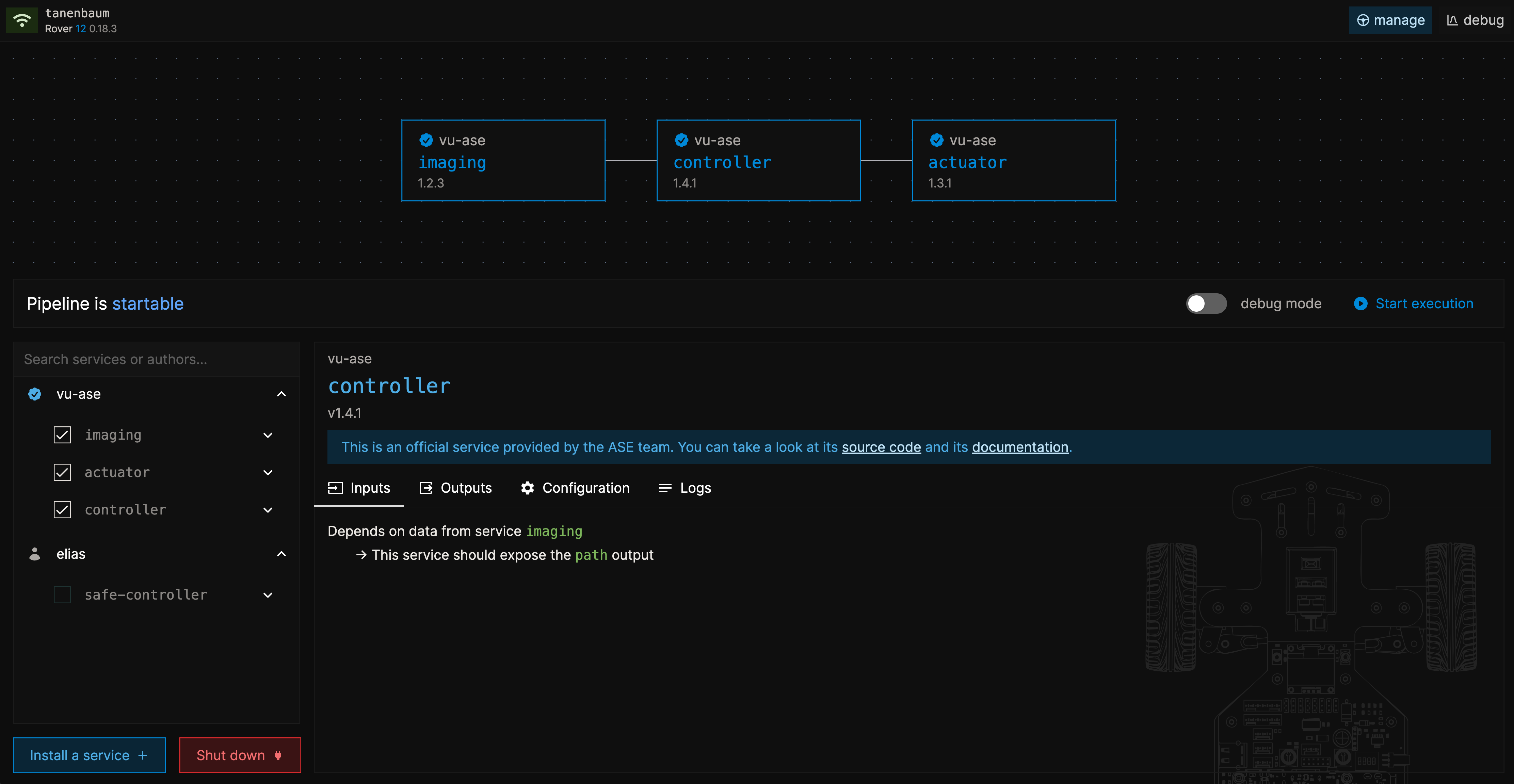
Swapping Services
Click on the safe-controller service and try to enable it. Notice that once you do, the original controller service will be disabled. Both services identify as a "controller" service, and since in every pipeline, all service names must be unique, roverctl-web helps us here.
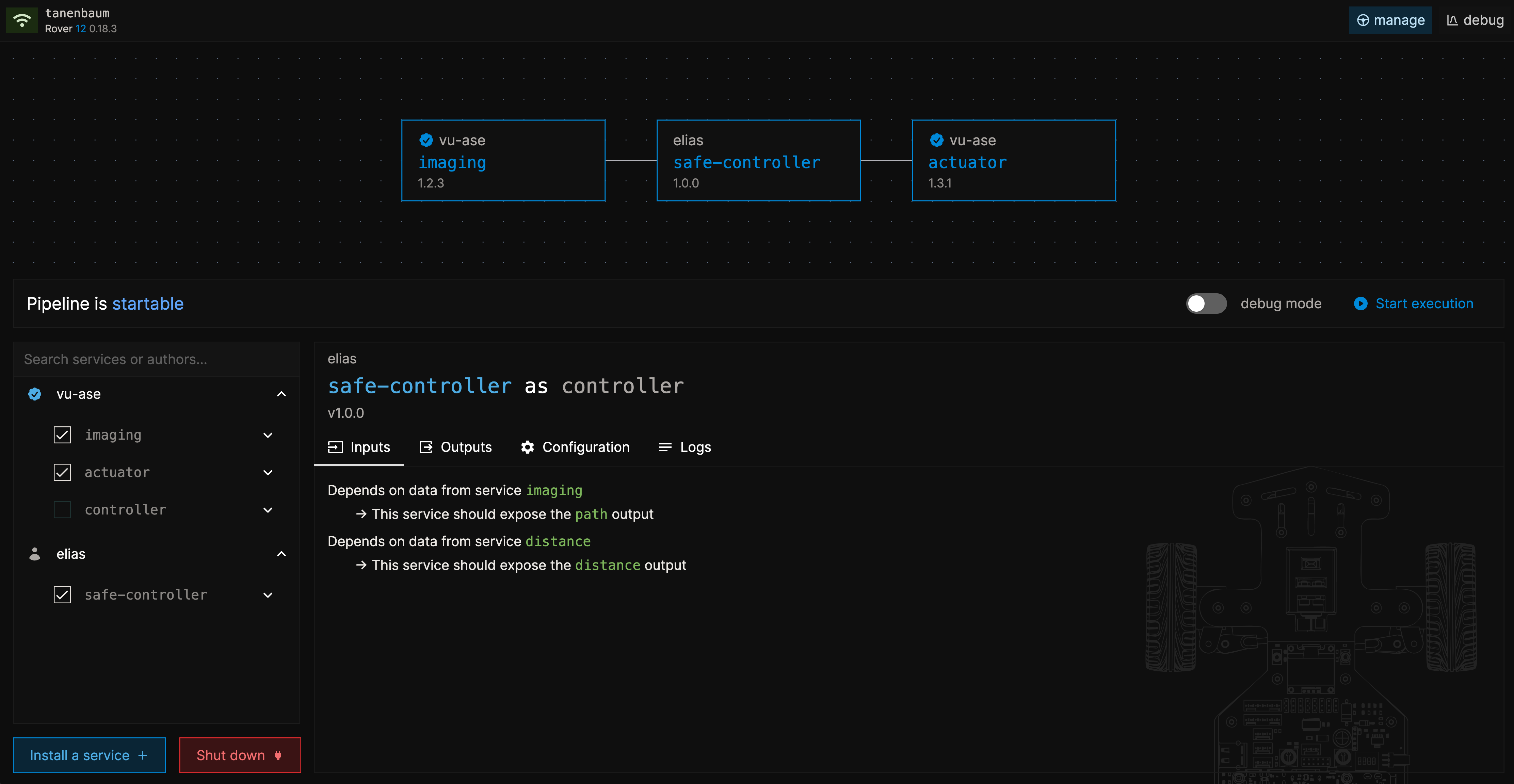
So far, so good. Start the pipeline by pressing "start execution". Notice that the pipeline execution fails.
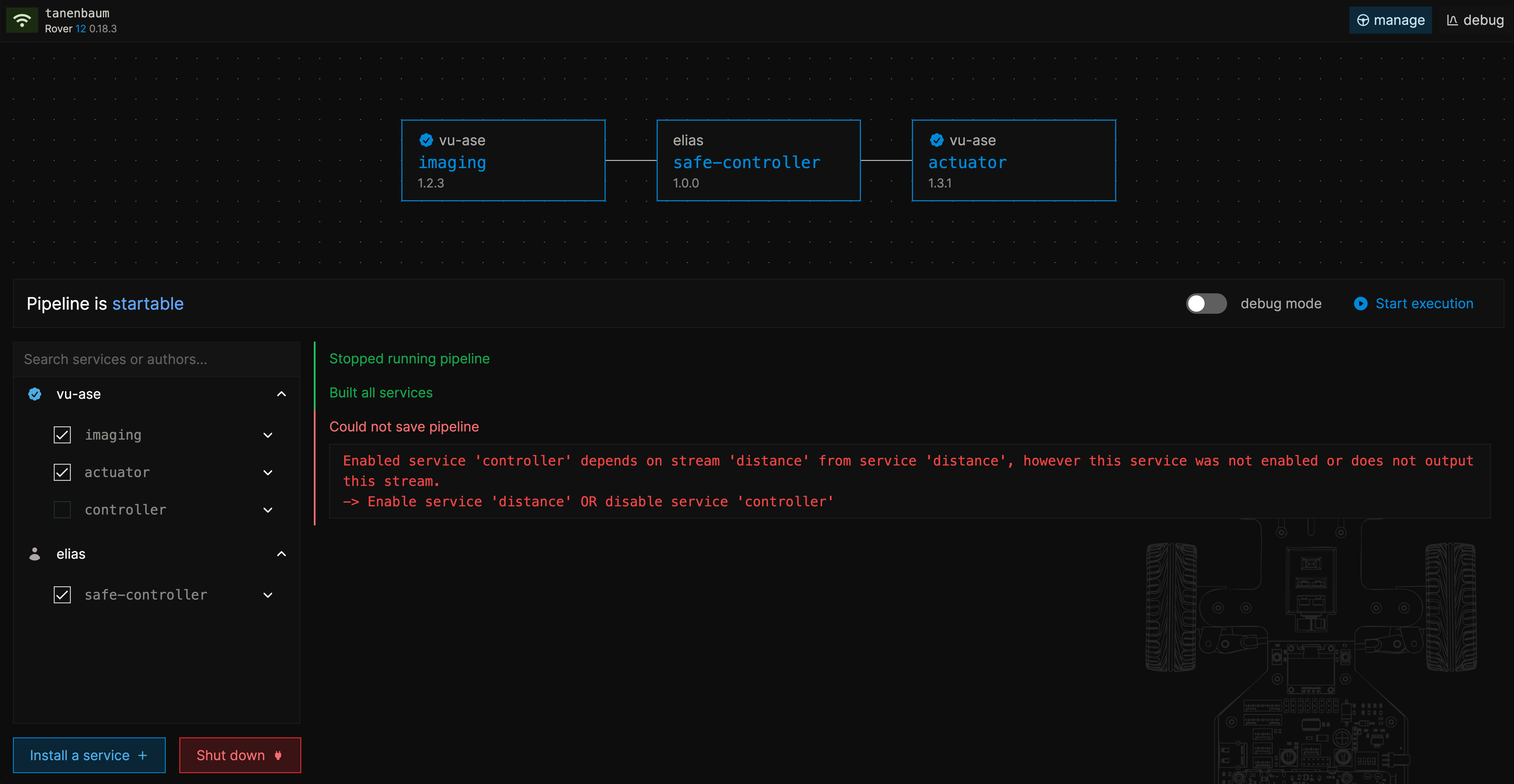
The stream "distance" from service "distance" is missing. Uh oh.
Installing the Distance Service
When you click on the "safe-controller" service in roverctl-web and open the "inputs" tab, you will see that it depends on two services: "imaging" (which we already have installed) and a "distance" service, that should a "distance" output. The latter service is not installed yet.
Fortunately, the ASE team has created a "distance" service for you. You only need to install it onto your Rover still.
The distance service is published here. This is a regularly released service, that can be installed conveniently through its zip file. Head to the latest release and copy the link address of "imaging.zip".
Head back to the manage page in roverctl-web amd press "install a service" in the bottom left. Enter the URL of the ZIP file here.
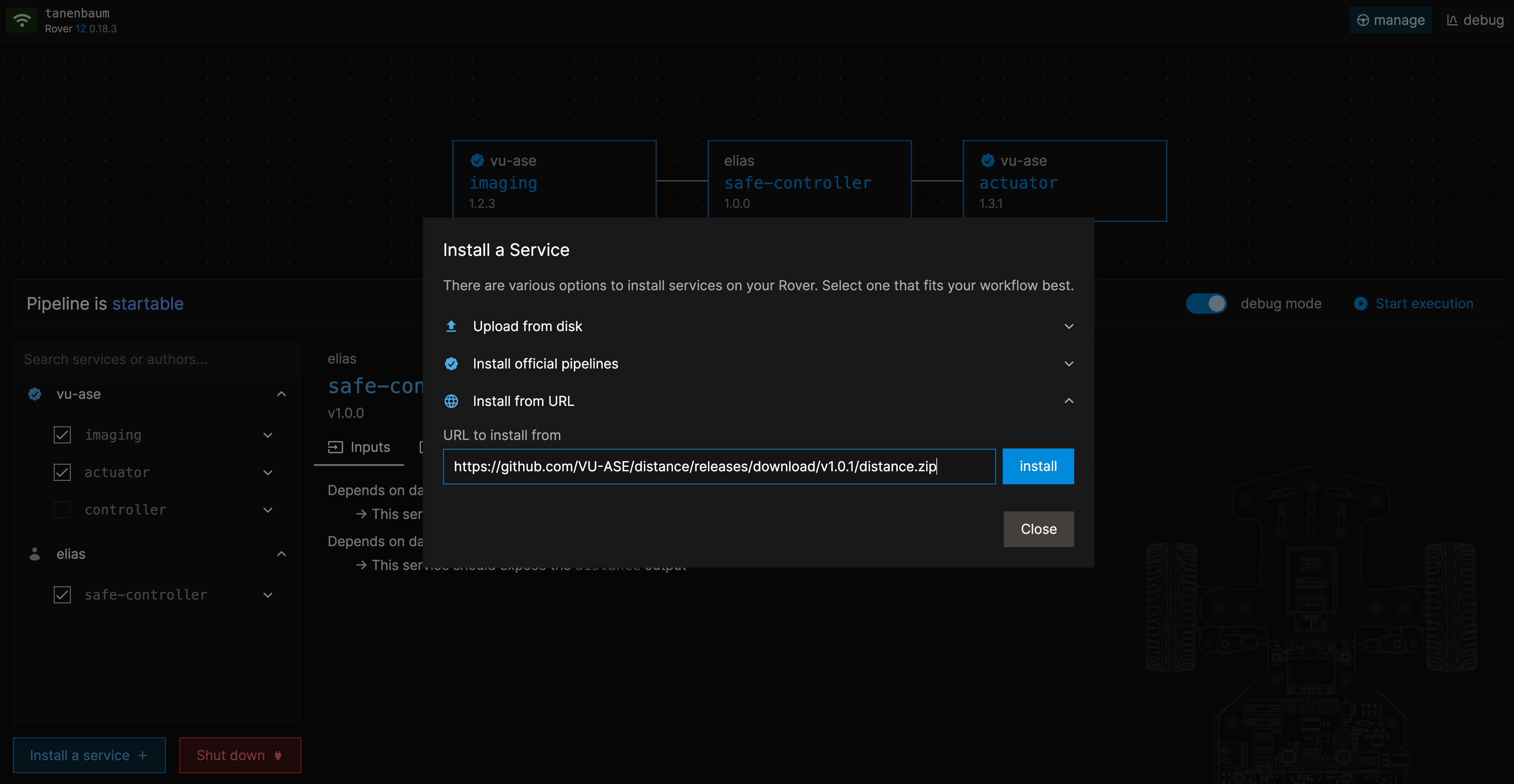
Press "install" and wait for installation to succeed. Then enable our new pipeline: "imaging", "distance", "safe-controller" and "actuator".
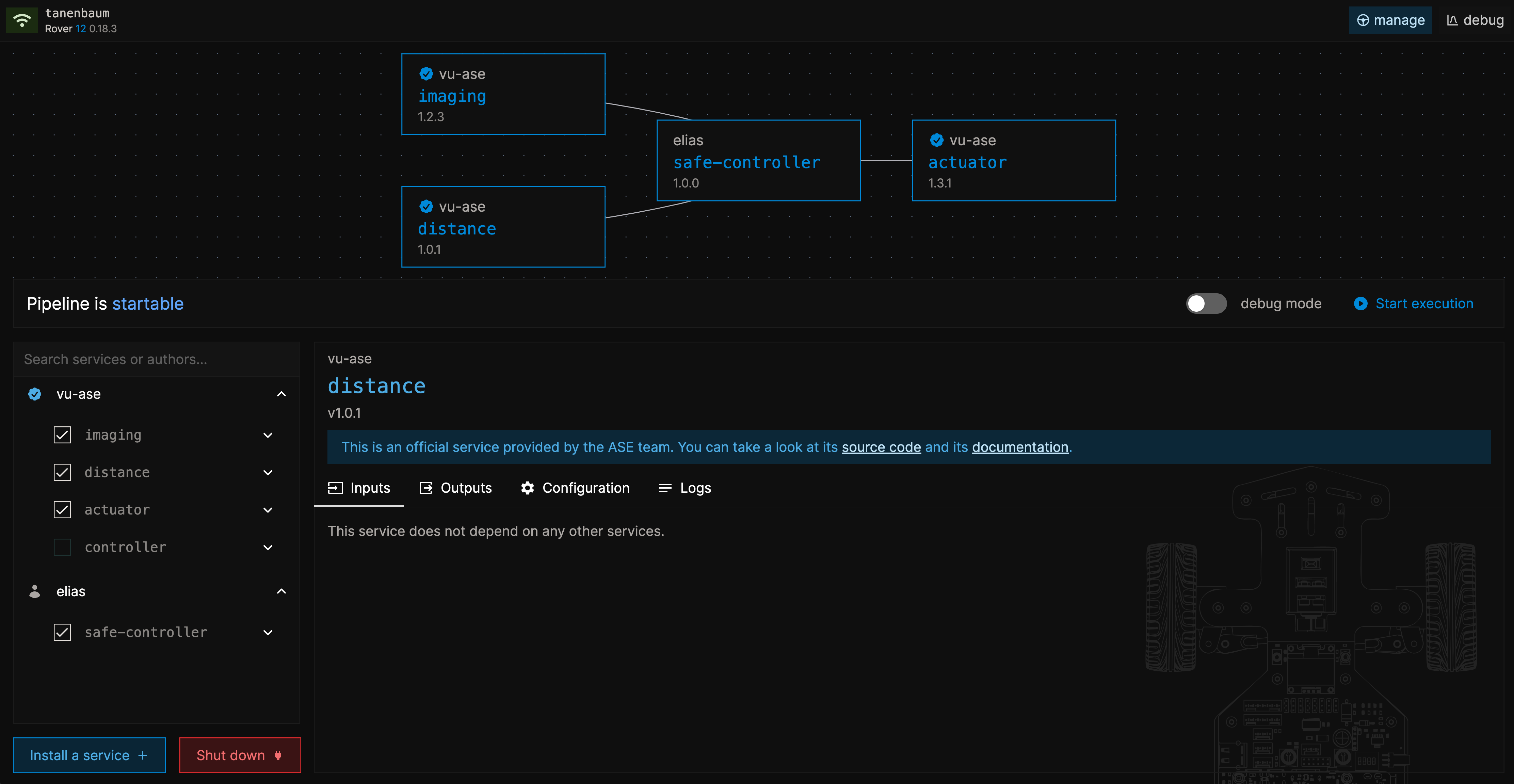
Notice how the flow-chart at the top also indicates the safe-controller's dependency on imaging and distance. Press "start execution" and try to put a foam block on the track. The Rover will stop in front of it.
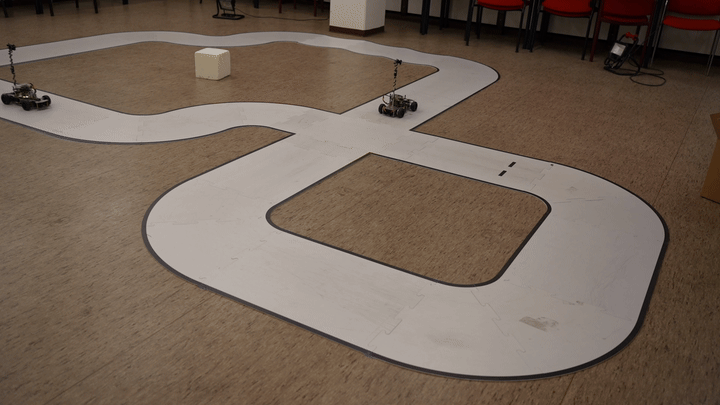
At this point, you have seen how pipelines can be composed, executed, debugged and tuned. You can install services from various sources and swap them in and out as Lego pieces. Pipelines can be complex, and services can be written in any language, as long as they output the correct data.
The ASE framework allows you to write your own services and interface them with the services that we provide, benefiting from all debugging and tuning capabilities and expanding the ecosystem of services that can be enabled on the Rover.